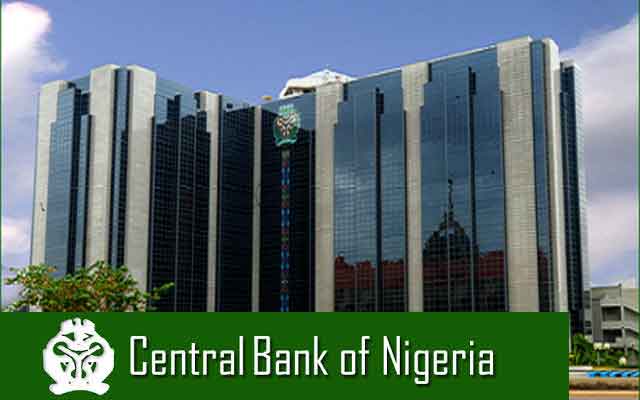The Central Bank of Nigeria’s (CBN) directive to phase out regulatory forbearance, coupled with the high Cash Reserve Ratio (CRR) and Liquidity Ratio (LRR) requirements, may impact banks’ lending capacity to the real sector, analysts say
The CBN’s recent directive on forbearance has restricted banks under regulatory oversight from declaring dividends, defer bonuses for executives, and halt investments in foreign subsidiaries or offshore ventures.
“Coming at a time banks are already absorbing significant credit losses ocassioned by fragile economic recovery and foreign exchange instability, the envisaged economic leap may be threatened,” days an analyst, who preferred to remain anonymous.
Already, some of the banks are facing backlashes from shareholders who bet on dividends and bonuses, presently weighing options between offloading their shares or wait for the next, three years, maximum, to enjoy the payouts.
The banks affected are those benefiting from regulatory forbearance related to credit exposure and Single Obligor Limit (SOL) breaches, indicating potential financial stress or heightened risk exposure.
Some of these major banks have been operating under forbearance arrangements since the COVID-19 pandemic, about five years ago
According to another analyst, ” the directive may lead to increased risk aversion among banks, potentially resulting in reduced lending and investment activities, among others.”
This is despite the fact that the directive aims to ensure that banks maintain their capital adequacy and liquidity, which can enhance financial stability, among others.
At the May 19-20 Monetary Policy Committee, (MPC) meeting, the Committee decided, among others, to retain the Cash Reserve Ratio, (CRR) of Deposit Money Banks at 50.00 per cent and Merchant Banks at 16 per cent.
They were also directed ro retain the Liquidity Ratio (LRR) at 30.00 per cent.
While, CRR requires banks to hold the percentage of their deposits in reserve with the CBN, they must also maintain the minimum level of liquid assets relative to their total assets.
” I can assure you that the development, has the potential of hindering Nigeria’s goal of achieving the $1 trillion GDP” asays Friday Ameh, Lagos bases wnwrfy analyst.
Ameh, further argue that since economic growth is a function of adequate financial intermediation, typified by banks’ aggressive lending, particularly to the real sector as well as the Micro, Small and Medium Scale Enterprises, (MSME) of the economy, concurrent implementation of these monetary policy decisions, could limit the banks’ ability to lend to the real sector, as they are required to hold a significant portion of their deposits in reserve.
The implication is that it leaves them with 20 percent of the liquidity, while 70 percent lie idle with CBN, despite counter arguments by other analysts, of the need for adequate buffer to fall back on, in the event of crisis.
Also, banks under regulatory forbearance are required to make provisions for potential losses, which can impact their capital adequacy ratios and lending capacity.
This is just as suspension of dividends payouts will possibly, affect investor confidence and limit their ability to raise capital.
Specifically, Zenith Bank has $1.6 billion in forbearance loans, representing 23% of gross loan book, FirstBank, woth $887 million in forbearance loans, repeesents 14% of gross loan book.
Access Bank: with $304 million in forbearance loans, 4% of gross loan book; Fidelity Bank: has $296 million in forbearance loans, 10% of gross loan book, and FCMB, $134 million in forbearance loans, 8% of gross loan book
According to Nairametrics’ research, for instance, ten listed commercial banks recorded a cumulative N3.77 trillion in loan impairment charges between 2023 and Q1 2025.
The figure, it further noted, surged from N1.34 trillion in 2023 to N2.13 trillion in 2024, with an additional N297 billion in provisions recorded in the first quarter of 2025 alone.
Already, some banks, including, FCMB have commenced measures to assure investors on their determination to sustain dividend payments despite the forbearance loan challenges
Other banks, like Zenith, GTCO, according to sources, have either cleared or are near to clearing their forbearance positions, putting them in better stead for.financial intermediation, even , amid tight fiscal and monetary policy measures.
Accorsing ro Rennaisance Capital, (RENCA) report, regulatory forbearance was introduced in March 2020 as part of pandemic-era relief measures that allowed Nigerian banks to restructure loans to struggling sectors such as oil and gas, agriculture, and power, without classifying them as impaired.
According to data compiled by it, the CBN’s forbearance policy kept the sector-wide NPL ratio at a modest 4.3%, below the 5% regulatory threshold, despite severe macroeconomic dislocations.
Estimates by Renaissance Capital also show that seven Tier-1 and mid-tier banks, Zenith Bank ($910 million), FBN Holdings ($848 million), UBA ($771 million), Access Bank ($535 million), Fidelity ($556 million), FCMB ($332 million), and GTCO ($60 million)—carry a combined $4 billion in restructured or “forborne” loans, primarily concentrated in the oil and gas sector.
These loans are largely classified as Stage 2 under IFRS 9, denoting a significant increase in credit risk but not yet non-performing.
However, the Rencap report was published in December based on estimates from the bank’s 2024 half-year results, although Rencap will be updating the report soon.
Some analysts say, since CBN is determined to end, what they regard as prolonged and distortionary relief, even based scenario implementation of the policy is bound to exert pressure on the banks’ capital positions.
The report noted that, under a base case scenario where banks are required to take a 10% provision against forbearance loans through equity, capital adequacy ratios (CAR) could decline significantly.
Consequently, Zenith Bank’s CAR would fall by an estimated 128 basis points; FBNH, by 149bps; and Fidelity, by as much as 394bps.
While GTCO has already provisioned roughly 80% of its forbearance book and Zenith Bank 20%, others appear less prepared.
FBN Holdings’ largest exposure—oil group Aiteo—has reportedly resumed interest payments, suggesting an improvement in cash flow, but uncertainty remains over the repayment of principal.
In a worst-case scenario, where loans are reclassified as NPLs and banks are required to provision through their profit and loss accounts, NPL ratios could exceed the CBN’s benchmark.
Renaissance Capital projects NPL ratios could rise to 7.2% for FCMB, 7.1% for UBA, 6.7% for Zenith, and 6.2% for FBNH, well above current levels.
However, the firm sees estimated declines in capital adequacy ratios (CAR) of Fidelity Bank: down 394 basis points, FCMB: down 198bps, FBNH: down 149bps and Zenith Bank: down 128bps.
READ ALSO:Oil Prices Extend Rise As Iran-Israel Conflict Enters Sixth Day
But, they joted that in the worst-case scenario—if banks are forced to reclassify forbearance loans as non-performing—the NPL ratios could rise significantly:
FCMB: from 5.4% to 7.2%, UBA: from 6.4% to 7.1%, Zenith: from 4.6% to 6.7%, FBNH: from 4.8% to 6.2%.
Only Access and GTCO would remain below the regulatory 5% NPL ceiling based on the company’s published Frcemver report.
The analysts were unanimous in their submissions that, while the withdrawal of forbearance introduces capital and liquidity pressures, the data suggest that most of the systemically important banks are adequately cushioned, at least in terms of loan loss provisionin.
The fact remains that, the risk remains unevenly distributed, and banks with weaker NPL coverage, high sectoral concentration, or under-provisioned loan books may still face earnings pressure or potential capital erosion.
The NPL coverage ratio is a measure of how much loan loss provision a bank holds relative to its current stock of non-performing loans. The higher the ratio, the stronger the buffer against future credit losses.
Recent data compiled by Nairametrics show that most banks are better positioned to cover bad loans due to their high NPL coverage ratios.
Zenith Bank, for instance, leads with an NPL coverage ratio of 223.0%, indicating it has nearly three times more in provisions than reported bad loans.
GTCO and Fidelity Banks also show solid cushions at 138.7% and 138.4%, respectively. Stanbic IBTC and Access Bank are moderately covered, with ratios above 110%.
However, UBA and FirstBank Holdings show weaker provisioning at 80.9% and 52.4%, and may need to improve this buffer to provide assurance that they can absorb shocks if macroeconomic conditions worsen further.












